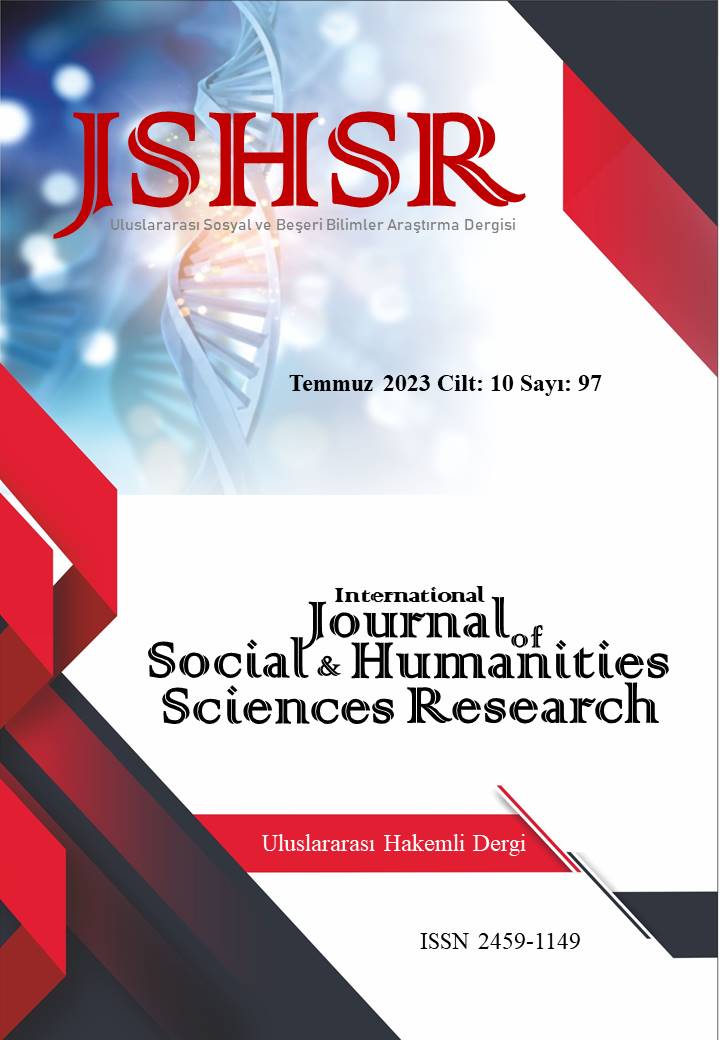A 13th Century Zawiyah "Sheikh Jarrah" in Jerusalem
Jerusalem, Sheikh Jarrah, Zawiyah
DOI:
https://doi.org/10.5281/zenodo.8196914Keywords:
Jerusalem, Sheikh Jarrah, ZawiyahAbstract
Jerusalem, one of the oldest cities in the world, has hosted many civilizations and different beliefs throughout its long history. It is possible to read the traces of every civilization and belief in the city of Jerusalem. In 1099 (Fatimi land), Jerusalem was captured by the Crusaders and ruled as the Latin Crusader Kingdom until 1187. Jerusalem, which was taken back by Saladin on this date, became an Islamic land again. Through the zawiyas, one of the most important institutions of Islamic civilizations, the religion of Islam was spread and rooted, and they played an active role in the development and settlement of the area they were in. The zawiyas, which can be called by different names in different geographies, are structures with similar functions. Sheikh Jarrah, who is the subject of the article, also established a zawiya outside the walls of Jerusalem after Jerusalem was taken by Saladin Ayyubi. The zawiyah has many features, from Islamic education and the spread of Islam to offering accommodation for visitors and reconstruction of the place where it is located.. After Sheikh Jarrah died in 1201, he was buried next to his zawiyah and a tomb was built on it. In the 19th century, a mosque was added to the said building program. It is understood that the zawiyah, which was a foundation work in this century, no longer had any income and needed repair. The article aims to shed light on the historical development of Sheikh Jarrah, a 13th century zawiyah, and its situation in the 19th century (with reference to the archive document and period photographs).
References
Akkaya, V. (2020). Kudüs' te tasavvufi hayat. Huzuru Bekleyen Kudüs, 262-271.
Aydın, A. A. (2021). Mülksüzleştirilen Filistinlilerin Son Dramı: Kudüs Şeyh Cerrah Mahallesi. https://ordaf.org/mulksuzlestirilen-filistinlilerin-son-drami-kudus-seyh-cerrahmahallesi/#article-footnote-1
Çınar, F. (2019). Fonksiyon ve Değeri Açısından Tasavvufî Kurumlar. Somuncubaba, (220),. 49-51.
Davis, R. (2002). Ottoman Jerusalem: The Growth of the City outside the Walls. Jerusalem 1948 the Arap Neighbourhoods and Their Fate in the War. (Ed. S. Tamari). The Institute of Jerusalem Studies.
Gelir Çelebi, A. (2017). Somut Olmayan Kültür Mirası “İmaret Geleneği” ve Osmanlı İmaretleri. [Yayınlanmamış Yüksek Lisans Tezi], Kadir Has Üniversitesi.
Gelir Çelebi A. ve Kara Pilehvarian N. (2023). Kudüs’te Bir 13. Yüzyıl Kültür Mirası Şeyh Cerrah Türbesi Ve Yerleşim Yeri. 8. International Paris Congress on Social Sciences & Humanities Proceedings book. April, 1-3 2023-Paris. Irine Zarnadze, Shalva Zarnadze (Eds). 764-776.
Hawari, M. (1998). Ayyubid Jerusalem An Architectural And Archaeological Study. [Phd Thesis] University of London.
Jubeh, N. (2021). Shaykh Jarrah. Jerusalem Quarterly, 86, 129-148.
Kara, M. (2011). Tekke. Diyanet Vakfı İslâm Ansiklopedisi. Diyanet Vakfı Yay.
Kark, R. & Landman, S. (1980). The establishment of Muslim neighbourhoods in Jerusalem, outside the Old City, during the Late Ottoman Period. Palestine Exploration Quarterly, 112(2), 113-135.
Ocak, A. Y. (1978). Zaviyeler (Dini, sosyal ve kültürel tarih açısından bir deneme). Vakıflar Dergisi, (12), 247-269.
Okudan, M. (2019). Sufilerin/Ariflerin Yaşam Mekânı Olarak Zaviyeler. Buhara’dan Konya’ya İrfan Mirası ve XIII. YY. Medeniyet Merkezi Konya (II). Konya Büyükşehir Belediyesi Kültür Yayınları. 391-396.
Reiter, Y. & Lehrs, L. (2010). The Sheikh Jarrah affair: The strategic implications of Jewish settlement in an Arab neighborhood in East Jerusalem. The Jerusalem Institute for Israel Studies Established by the Charles H. Revson Foundation.
Sabbagh, M. (2017). The Husayni Neighborhood in Jerusalem: Space of Self-Invention. Jerusalem Quarterly, (72), 102.
Tanman, M. B. & Parlak, S. (2011). Tekke-Mimari. Diyanet Vakfı İslâm Ansiklopedisi. Diyanet Vakfı Yay.
Torun, A. & Şahin, H. (2018). 1866-1880 Dönemi Tapu ve Kadastro Genel Müdürlüğü Arşivindeki Kudüs-i Şerif’e Ait Vakıf İlişkili Tapu Kayıtları. XVIII. Türk Tarih Kongresi Kongreye Sunulan Bildiriler (V. Cilt), 611-626.
Toydemir, A. (2022). Tekke Yapılarının Konya’daki Örnekler Üzerinden Mimari İncelemesi. [Yüksek Lisans Tezi] Konya Teknik Üniversitesi.
BOA. HH.THR. 351/28
(http 1) https://www.jerusalemstory.com/en/article/sheikh-jarrah-northern-gateway-jerusalem
(http 4) https://www.nli.org.il/en/maps/NNL_MAPS_JER990028104200205171/NLI#%24FL10591189
(http 5) https://digitalcollections.nypl.org/items/510d47d9-77de-a3d9-e040-e00a18064a99
(http 6) https://jerusalempedia.com/Tombs_of_the_Kings.html
(http 7) https://madainproject.com/sheikh_jarrah_mosque_(jerusalem)
(http 8) https://rarehistoricalphotos.com/jerusalem-ottoman-rule-pictures-1900-1918/
Downloads
Published
How to Cite
Issue
Section
License
Copyright (c) 2023 INTERNATIONAL JOURNAL OF SOCIAL HUMANITIES SCIENCES RESEARCH

This work is licensed under a Creative Commons Attribution 4.0 International License.


